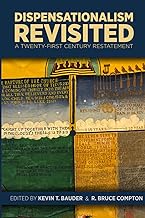This reposts an essay from ten years or so ago.
A Plea For Plain-Speaking
I am considering this matter of plain speaking in theological discourse, and have noted my dislike of those views which put something in a such way that it is easy to mistake the intentions. We are used to being given the run-around by the Cults – for they deal in duplicity – but evangelical brothers and sisters can do this sort of thing too. I only wish to issue a plea for plain-speaking.
Any “liberal” scholar will attest to the fact that the Four Gospels report that Jesus performed many miracles. They admit this because the texts of the Gospels SAY SO. Then they proceed to undermine the reliability of these reports so as to disbelieve what they know the Evangelists say. There are assumptions that get in the way: the laws of nature (so-called); Hume’s and Kant’s critiques; ideas about the overlay of myths, etc. And while we strongly repudiate the fallacies which inhere in these liberal assumptions, at least they tell us what the text is saying! There is little prevarication about the wording of the text. At least we can agree on that!
Sad to say, it is not always so easy when one is dealing with supercessionists. Although they are not all guilty of it, many of them – in both Reformed and Non-Reformed camps – are hard to deal with when it comes to admitting what many prophetic and salvation texts say.
But my “gripe” here is with what I really see as disingenuousness in modern “replacement” theology [how they dislike that term. But I do not use it pejoratively].
“Expansion” or Something Else?
As I pinpointed towards the end of my last post, those who nowadays like to talk so smoothly about the “expansion” of Israel’s promises in the OT exemplify what I am on about. Consider this:
In my view, these land promises [in the OT] will yet be fulfilled, only more so. That is, the land has been expanded to the whole earth, and Israel has been expanded from merely the ethnic descendants (while not excluding an ethnic remnant, even as is so today) to include spiritual descendants as well. (Although I do think Romans 11 makes it clear that a time will come when the Gentiles largely reject the gospel, only for it to return to many of those who self-identify as Jews.)
This snippet came as a response to a question about what Genesis 15:8-21 and Jeremiah 33:14-26 say. Please read the above quotation carefully and compare it with the two OT passages. What this person asserts has the result of the specific land promised to a specific ethnic group being transformed into a non-specific land (the whole earth) given to a homogenous multi-ethnic “spiritual Israel.” And this is quite a restrained example. At least this individual believes (or says he believes, one would have to press him further on this) that the “land” is literal land on this earth. Now this would be what one could call an “expansion,” but only as long as the party being promised is the party receiving the promise!
That, of course, is always where the problem lies. And that is precisely why this “expansion” language, if it were true, would have misled many of God’s people. God would be promising literal land to the ethnic descendents of Abraham, Isaac and Jacob (even going so far as to designate Israel as “Jacob” – Isa. 27:6; 43:1, 22; Psa. 135:4), when, in reality, He would know that He wasn’t making the promises with those whom He was speaking to but to the Church. (We shall see in the next post that this has serious ramifications for the Doctrine of God!).
But most will go further than this and say that the “land” is not any physical geographical location at all. It is heaven. Very often Hebrews 11:10, 14-16; 12:22 are trotted out to “prove” this. Of course, Abraham himself was told directly that he would not inherit the land himself, but his descendents would. The reference in 12:22 is a contrast with Mt. Sinai, not with the Promised Land. That fact should alert us to possible wrong applications. It is a difficult passage, but it should not be interpreted as saying that we all finally spend eternity in Heaven. As commonplace as that belief is, it is not supported in the Bible (cf. e.g., Rev. 21:2-3, 10, 24).
There are some, like Hoekema, who teach that these promises will be realized upon the new earth. But they only get there by turning ethnic Israel into the Church (or the other way round, which is the same thing), and rejecting plain-sense interpretations of OT covenants in context.
False Analogies
A common approach is to use analogies. So Robert Strimple, for example, spins a yarn about a father who promises his son some “wheels” and when the time comes around the father presents the young man with a Ferrari! (See Strimple’s essay on “Amillennialism” in Three Views on the Millennium and Beyond, edited by Darrell L. Bock, 99-100).
But this is not an altogether reputable move; for in the story the father (apart from lacking common sense!) promises, not a bicycle or moped, but “wheels.” The son’s expectations might very well have been much lower than a Ferrari. But he did get what was promised, not something else (like a yacht – no wheels!). That could rightly be termed an “expansion.” Furthermore, the one to whom the promise was made was the one who received the prize.
So what Strimple’s example ends up doing is actually reinforcing the importance of keeping one’s promise to the one to whom it is made! If he had been more forthcoming, Strimple would have had another young man receiving a yacht or a home, or something without wheels, while the son would have gotten Nada!
Thus, the true analogy shows up the deceptiveness, not just of the father in the story, but, alas, the one who used a false analogy! This is not “expansion.” This is wholesale alteration.
Expansion normally involves making one state of affairs extend to become an enlarged version of the same thing. Thus, a business expands, not by changing into another business, but by growing in its production and market share, and/or moving into other areas of output. It is still the same business, but it has grown (it may eventually morph out of its original aims into something else, but this is admitted to be a “change” or “transformation” into something new).
Similarly, when Persia or Greece or Rome expanded their empires, they did not cease to be what they were and become something else. But their empires and influence and power grew.
In Scripture itself one recognizes the same pattern. The “rock cut out without hands” in Daniel 2 expands to cover the whole earth. It is the same rock. It is the same Person (Christ in His reign).
Two Psalms
“My covenant I will not break, nor alter the word that has gone out of my lips” – Psalm 89:34
In context this unalterable word refers to the Davidic covenant. Here is an even clearer statement:
“O seed of Abraham His servant, You children of Jacob, His chosen ones! He is the LORD [YHWH] our God… He remembers His covenant forever, the word which He commanded, for a thousand generations, the covenant which He made with Abraham, and His oath to Isaac, and confirmed it to Jacob for a statute, to Israel as an everlasting covenant, saying, ‘To you I will give the land of Canaan as the allotment of your inheritance…’” – Psalm 105:6-11.
But according to our supercessionist friends this “covenant” is fulfilled by Christ and those “in Christ.” Therefore, the “land of Canaan” which God took an oath to give to the descendents of Abraham, Isaac and Jacob, will not be given to them “forever.” In fact, they have no claim to the land even now! God’s oath, according to supercessionists, does not mean what it says.
“Ah, but it means more!” comes the reply. Not to literal Israel it doesn’t. And if it meant more why didn’t God say that? Why would He use language calculated to mislead His people? Some of the brethren evidence a strange resistance to words like “change” or “alteration” when it comes to God’s promises. The question is, “Why?” And what does this mean in the way one thinks about God?
That will be the burden of the next post...


